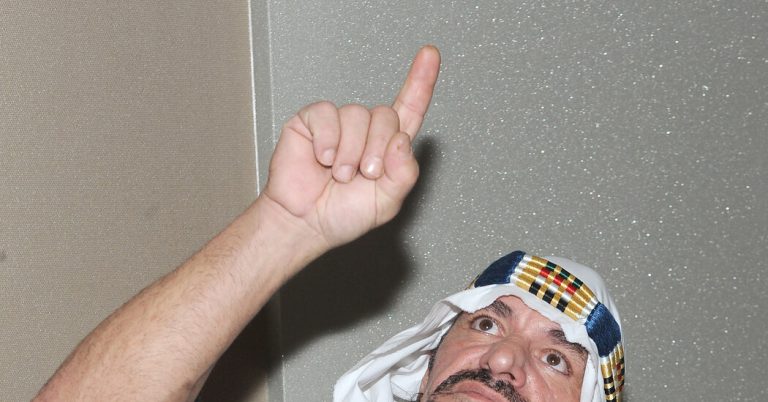Protests in Iran against the government spread to more than five dozen cities on Friday even as the authorities escalated a crackdown that has reportedly killeddozens of people and brought the arrests of prominent activists and journalists, according to rights groups and news media reports.
Internet access — especially on cellphone apps widely used for communication — continued to be disrupted or fully blocked, affecting Iranians’ ability to communicate with one another and the outside world. News from Iran has trickled in with many hours of delay.
In many cities, including Tehran, the capital, security forces opened fire on crowds. On Boulevard Ferdous and at the Shahrak Ekbatan apartment complex in Tehran, the forces fired at windows; in the city of Rasht, they threw tear gas into apartments, according to witnesses and videos on social media.
Iranian state media said Friday that at least 35 people had been killed in the unrest, but human rights groups have said the number is likely to be much higher. A previous death toll of 17 issued by the state media included at least five members of the security services.
The videos posted online and the scale of the response from the authorities are difficult to independently verify, but video and photographs sent by witnesses known to The New York Times were broadly in line with the images being posted widely online.
Understand the Protests in Iran
Demonstrations erupted after a young woman’s death in the custody of Iran’s morality police, who enforce the country’s strict Islamic rules.
- What to Know: What’s driving the protests? What are the implications? Here’s a look at the escalating situation.
- The Death of Mahsa Amini: The 22-year-old woman was detained for allegedly violating Iran’s mandatory hijab law. Her suspicious death, publicized by social media, struck a national nerve.
- A Display of Defiance: The protests, one of the most visible challenges to the government in years, have grown to encapsulate a wide range of grievances against the Islamic Republic.
- Iran’s Deadly Response: The government struck back with a brutal and systematic crackdown, killing several people and injuring hundreds more.
In Iran’s northwest, the small city of Oshnavieh reportedly fell to protesters when local security forces retreated after days of intense fighting, the editor of a Kurdish news site said.
“I can confirm the city is in the control of the people,” the editor, Ammar Golie, an Iranian Kurd based in Germany who edits the news site NNS Roj, said in a telephone interview. He added, “The security forces that remain have retreated into an old fort located in the center of the city.”
Mr. Golie said he had been in regular contact with residents of Oshnavieh, which is in West Azerbaijan Province and has a population of 40,000 ethnic Kurds. He said the residents had set up roadblocks at the gateway to the city’s only two roads.
Videos posted on social media show large crowds marching in the streets of Oshnavieh, many wearing traditional Kurdish garb, and chanting, “Freedom.” Another video shows intense gunfights over control of the city’s Police Headquarters.
Mr. Golie said local contacts had told him that an army battalion and a unit of the Revolutionary Guards Corps from the nearest city, Oroumiyeh, had been deployed to crush the protests and take Oshnavieh back.
“We are expecting blood to be spilled,” Mr. Golie said. “It’s an extremely tense situation.”
The nationwide uprising was ignited by the death of a 22-year-old woman, Mahsa Amini, in the custody of the morality police on Sept. 16. Ms. Amini was arrested on accusations of violating the hijab mandate. Women have led the past week’s demonstrations, some ripping off their head scarves, waving them and burning them as men have cheered them on.
For seven days and nights, Iranians fed up with oppressive rules and squeezed by a tanking economy have taken to the streets, facing bullets, tear gas, beatings and arrests to send a message to the clerics who have led the nation for 43 years. They have chanted for an end to the Islamic Republic’s rule, according to witnesses and videos shared on social media.
In Tehran, protests have changed shaped from large gatherings at designated landmarks to smaller cells spread in most neighborhoods — including the affluent northern section and the working-class southern parts.
In the religious city of Qum, the power center of the Shiite faith and the government’s power base, videos posted on social media show scenes never seen before: young women stripping off their hijabs and crowds chanting against the supreme leader, Ayatollah Ali Khamenei, and calling him the nation’s “shame.”
President Ebrahim Raisi, upon returning to Iran from New York, where he addressed the United Nations General Assembly, warned on Friday in a speech at Tehran’s airport that the government would “not allow, under any circumstances, for the security of the country and public to be jeopardized.”
The Ministry of Intelligence sent a text message to all cellphone users warning that anyone participating in the demonstrations, which it said were organized by Iran’s enemies, would be punished according to Shariah law. Copies of the texts were shared with The New York Times and also posted on social media.
The Committee to Protect Journalists said that at least 11 journalists, including Niloofar Hamedi, the reporter from the daily newspaper Shargh who was the first to report on Ms. Amini’s case and interviewed her family in the hospital, had been arrested.
Among the activists arrested were Majid Tavakoli and the sociologist Mohammadreza Jalaeipour, the organization said.








